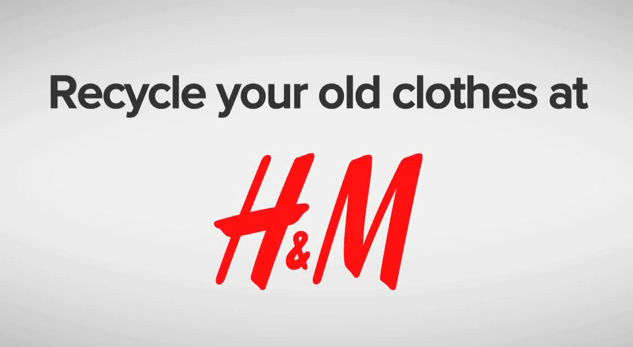Fast fashion has revolutionized the fashion industry. It has completely changed the retail space and the way the entire industry functions. Fast fashion is a term coined by the fashion retails to express that new designs now go from the runways to the stores at such fast speeds in order to capture constantly changing consumer trends. This is a way for retail stores to sell more clothes, in shorter periods of time, to more customers then ever before. However, the more new clothing we buy in such a short period of time, the quicker we get rid of our old ones. As the turnover increases, so does the amount of waste. The environmental impact from our excessive buying behaviour is hard to believe.
Companies leading the fast fashion industry include: Forever 21, H&M, Top Shop and Joe Fresh just to name a few. By pricing their products so low, it is impossible for these companies to fully cover the entire cost of the product, unless they sell fast and in huge quantities. However, even if they do so, there are many other costs that these companies need to take into consideration. Post purchase costs are a concern that many of these companies do not consider.
H&M is trying to make a change with their “Garment Collection Program”.
For the full details on the program feel free to look at this think below:
http://about.hm.com/en/About/sustainability/commitments/reduce-waste/garment-collecting.html
This program is trying to counter-balance the environmental impact of H&M’s fast fashion turnover strategy. By incentivising customers to recycle their used H&M clothing when they feel it is time to replace them, H&M is trying to incorporate a more sustainable model into their business.
Is it enough? I do not believe so. H&M’s entire business model is built on buying clothing for the short run. They sell clothing that are cheaply made and cheaply priced so customers do not feel bad when they simply dispose of their clothing after merely a few months of wear. By incorporating this recycling program, H&M is taking a step in the right direction, however they still have a way to go.



MarionaDomenech
March 8, 2016 — 9:01 pm
Excellent post! I particularly enjoyed the part where you mentioned that H&M is addressing the issue in the right way, but they are not doing enough. As you highlighted and as we have seen in class, there are some human costs in the manufacturing process. Even if H&M encourages their costumers to recycle their “old” clothes, they are still pushing underdeveloped countries to offer bad labour conditions to their employees to cut huge corporations’ costs. The problem is still there, and H&M is only trying to give the image of being a sustainable company by not addressing the real problem of fast fashion business model.
Collin Singer
March 16, 2016 — 5:18 pm
I ultimately agree with you, H&M is trying to battle the environmental impacts of a problem that they helped to create. What H&M should be doing is trying to change consumer mindset and create goods that last longer and stay in style over a greater period of time, so that people either recycle their goods, pass them down a family line, or perhaps pass them along through thrift stores.
It may seem silly to try and battle the idea of getting stylish clothes from the runway to the consumer as fast as possible, as taking advantage of trends seems to be the idea that fashion is built on, but perhaps taking a stand and creating clothes with less waste that are more functional is a point of differentiation to build a business on. Probably not one that H&M will do, but one nonetheless.
maria abell
March 20, 2016 — 12:33 am
I am very happy to see how leading companies in the fast fashion industry are taking responsibility and some action to face the consequences of the extreme consumerism that we are living nowadays.
I believe that it is going to be some years before the whole cost of the clothes to be included in the price of the item. If only few companies take this path, their prices are not competitive with other fast fashion brands. I have the feeling that, even if there is people that would like to buy their clothes in “responsible” stores, the price premium is still too high for their economies.
However, H&M is taking a step forward with this campaign. Being able to recycle the old clothes into new items or fabrics is a way to reduce the impact of this industry. I completely agree with you, although the recycling campaign is not the ultimate solution is a starting point to improve this situation.
shomasmah
March 22, 2016 — 11:21 am
Nice share Danielle! I think this post ties in nicely with the documentary we watched in class.
I agree with the last point you made that the post-wear recycling program is not enough on H&M’s behalf. In my opinion, this is a bandaid solution and does not tackle the root cause of the issue. The issue is that H&M is a fast-fashion company and relies on selling mass quantities of clothing in a short period of time by constantly refreshing the catalogue. A recycling program does not address the big issue, it simply provides a home for the clothes at the bottom of the drawer.
It almost makes the problem worst. As you said, it rationalizes new purchases for consumers because they feel that their old clothes are doing good for the environment. As we know, recycling will never by the final solution.
Basia
October 30, 2025 — 3:22 am
Hi, I noticed the video is currently set to private. Would you be able to re‑share it with me or make it “unlisted” for a short time? I’d like to use it for educational purposes — it was an excellent resource. Thank you so much!